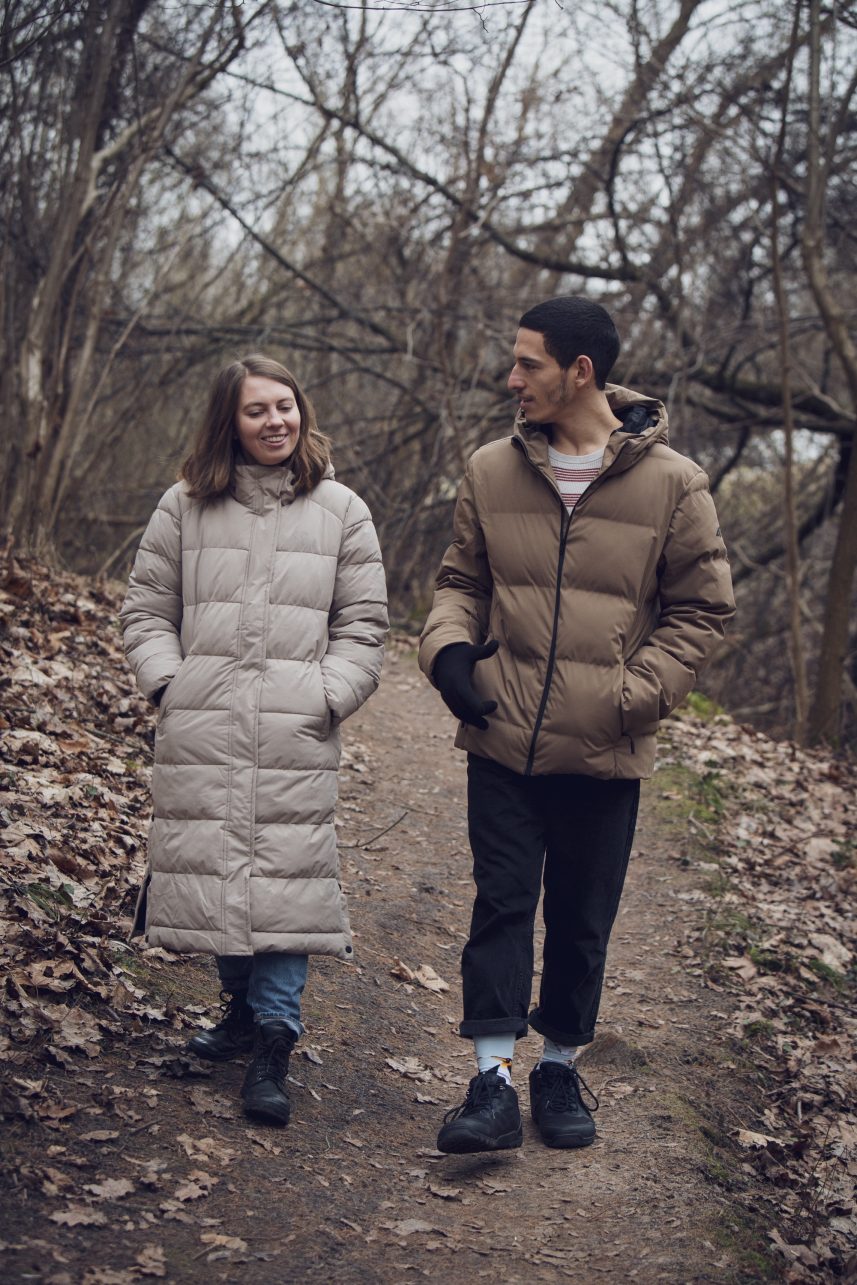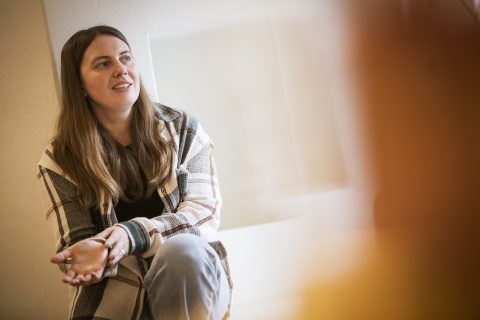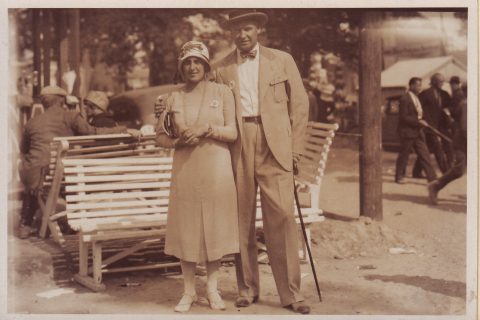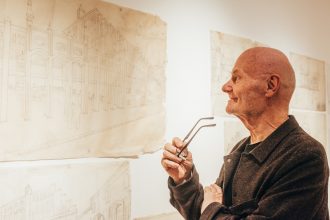“A low-budget love story” and “a random meet up on the beach” is how Adrian Carlo Bibiano and Karolina Latvytė-Bibiano described the beginning of their friendship. This evolved into a relationship rich in experiences, feelings, and creative activities, where contemporary dance meets interdisciplinary arts, where Mexico meets Lithuania, and one artist meets another.
Adrian Carlo is a dancer, choreographer, contemporary dance teacher and movement instructor. Karolina is an interdisciplinary artist, currently studying Sculpture at Vilnius Academy of Arts; she is a co-owner of an art gallery and a curator of various art events. Currently, they live in Kaunas, and as we summarized in the interview, their love relationship also works as a consulting agency for each other’s projects. Carlo and Karolina ended this interview with a kiss, so enjoy the love by your side and do not forget to appreciate the good, inspiring sides in each other.
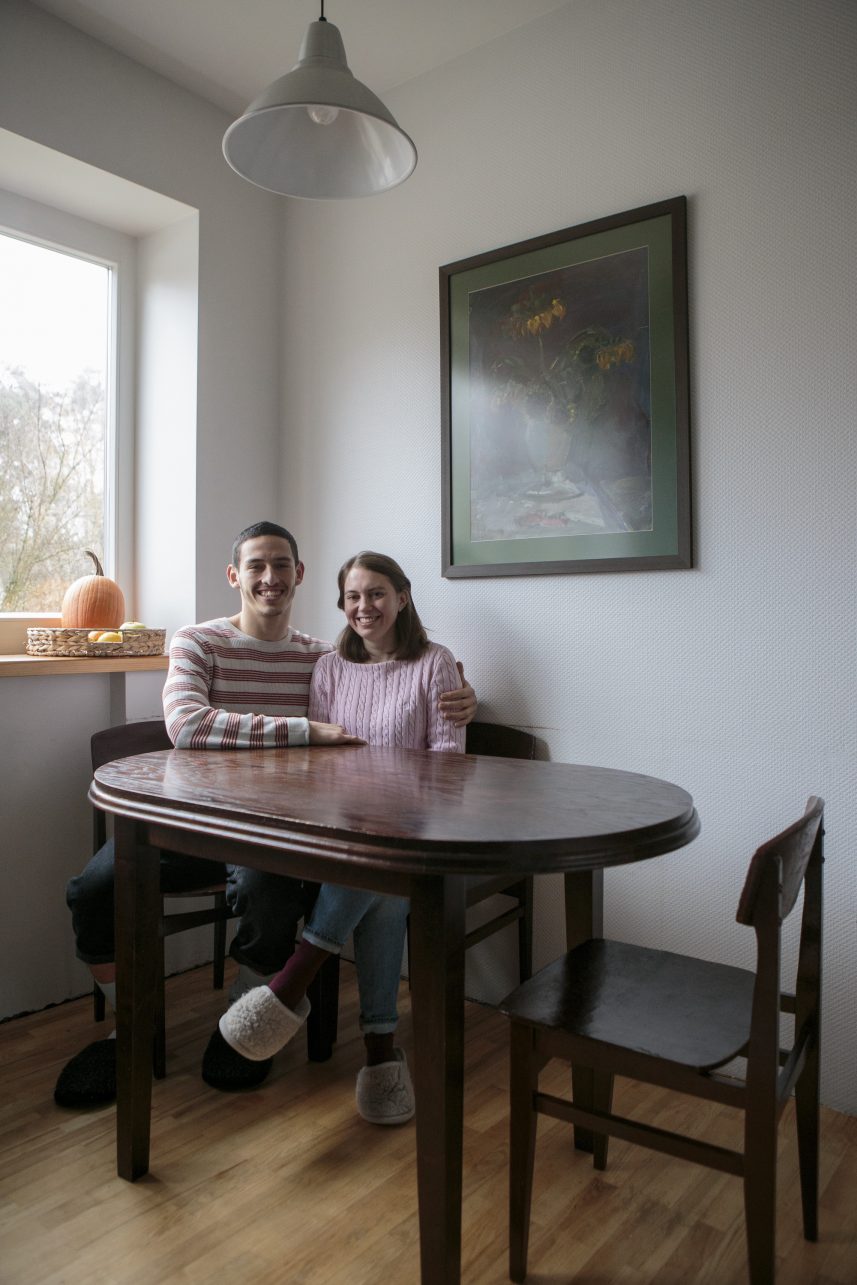
Tell us a bit more about yourselves. How did you meet each other and settle in Kaunas?
Karolina: I finished my Bachelor’s studies and, not knowing what to do next, decided to pick strawberries in Norway. I wanted to travel afterwards and for my solo trip, I chose Mexico. After spending three weeks there, Carlo and I randomly met on the beach.
Carlo: This story has two sides – hers and mine. I recall working the whole week and being very tired, so I did not want to go to the beach, but my friends insisted. One of them was leaving Mexico next week, and they wanted a picture of the three of us, so they took a professional camera, but they forgot the SD card. I assured them it was no problem as we were heading to a tourist place. There are plenty of people who can take pictures and send them to us afterwards. I saw a random person at the beach, who apparently was Karolina, and asked her to take pictures for us.
K: While doing that, Carlo’s friend started to complain that he looked bad, and I assured him not to worry as I could photoshop Brad Pitt’s face on top of his. And I did it eventually and sent it through email to both Carlo and his friend.
C: This Brad Pitt foolishness was the key because usually I do not check my phone or reply, but I saw this pic in my notification bar and thought, this girl is cool; we have to hang out. We started communicating through email, after two days, we met, and so we never separated as a couple.
What a coincidence! Now I understand why you said it was very random.
C: Exactly, that is why I nominated us “a low-budget love story couple”.
Moving to another country because of a loved one is usually a bold decision, and not only for the one that decides to leave – the other person carries the responsibility of meeting their significant other’s expectations of a foreign country and new chapter of life. How does this decision to move to Lithuania seem retrospectively for both of you?
C: This sense of responsibility and all those things around it happened twice on different occasions. The first time I came was not to live in Lithuania but to visit for the long term. We were getting married, so I wanted to meet Karolina’s family, and we spent a year here. Then we went back to Mexico with the idea of settling in my hometown, but everything moved on, and eventually, I felt that I was not fitting in. I had opportunities to work but not in my hometown, and that was problematic. Karolina was also not getting job proposals that would fit her. At that point, I had all those feelings that you mentioned. After a year, we made a decision to come back to Lithuania – when we were here, everything was going very well.
K: When we left for Mexico, we were at the peak of our activities here in Lithuania, and it seemed that we were leaving everything behind while starting from zero in Mexico. After we came back, some new opportunities started to appear, and Carlo got involved with the dance community in the city.
C: It is a good decision that we stayed here. I feel that when you are married, the responsibilities multiply for each other. I am very empathic, and it would hurt me if Karolina would not thrive in my environment.
K: Sometimes I think maybe I did not try enough or was too stubborn in Mexico because I had offers to work in jobs not related to art, but I did not want that. Sometimes I say that I love art too much to do something else, and I want to be in its processes in any way I can. This drove me to seek other opportunities.
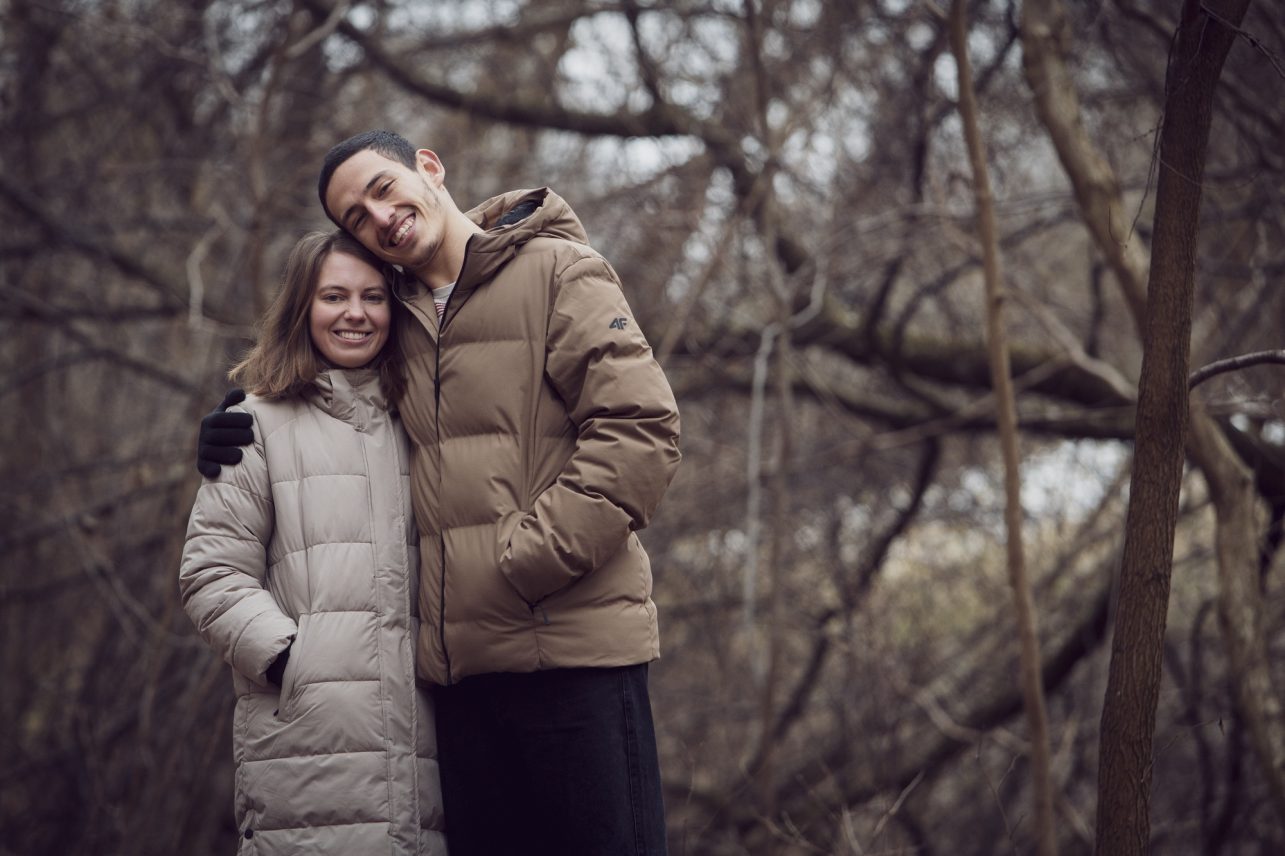
For sure, you are now very much involved in this process. You come from an interdisciplinary art field and also photograph and organize various art events. After studying painting, you are currently enrolled in Master studies of Sculpture at Vilnius Academy of Arts. How did you turn your attention to this field?
K: As I sometimes say, I lost myself in Painting studies because I like to do various things – taking pictures, sculpting, writing, and painting were not enough. I call it the post-academic depression phase after my Bachelor’s. After that, I had a few years to think about what I wanted to do and started to experiment with different materials while also looking for studies that would not put me in a box. Sculpture seems to be more interdisciplinary, where I can experiment, do my own projects and use a variety of techniques. So far, I have enjoyed it a lot, and it is already my last semester. Currently, I am preparing my final work.
You mentioned that you co-created the “IRGI gallery” during quarantine times. Tell us more about the idea behind it.
K: I was working on a project, which was supposed to be presented in a physical space, and once quarantine started, we had to find a solution on how to work in this virtual world, especially with painting. I do not really like those 3D tours, which replicate the real world – you hang pictures on the virtual walls that imitate the gallery space, but it does not say anything about the painting, space or ideas. That is how the idea of the “IRGI gallery” came around. In this space, we are combining both virtual and physical exhibitions.
What are the plans for the gallery in the future?
K: To be honest, we are currently working on this. It seems that we have both goals and plans, but we have not received funding for several years in a row, so it is becoming more and more difficult to move on. We have put together the exhibition schedule for this year. However, we do not yet know whether we will implement everything.
Do you select the artists yourselves? Or do they propose art pieces to you?
K: Both scenarios. In the first year, we found all the artists ourselves. Last year we organized an open call while also inviting some artists. This year we decided to choose the best fit by ourselves as we are teaming up with partners and using their physical spaces. For example, last year, we opened Gintarė Konderauskaitė’s exhibition in a beauty salon. Her work fitted so well, and the whole concept got better because of the non-traditional space. Therefore, we try to play with the space as well.
Adrian Carlo, when going through your biography and activities, it seems that your life is inseparable from dance. How did you get into this discipline?
C: My first encounter with dance was at school with folklore dance, which I sometimes enjoyed, but sometimes really hated it. Eventually, I realized that when I tried to find an excuse not to dance, it was related to stage fright. In high school, I somehow started to go to contemporary dance classes, although, at that time, I did not fully understand what it was. This new teacher, Melissa Castillo, started to show the side of a dance that I had never seen before and opened a whole new field for me. She respected and understood my stage fright but slowly led me on stage. She said, “Carlo, I will canalize you and transfer you from one system to another. You still don’t understand it, but you are meant to be on stage.”
Nevertheless, I chose Psychology studies, where I finished two years, and then Melissa called me and invited me to dance classes. There were professionals, who loved dancing and used it as an art, and it gave a completely different aspect to the pedagogical side of it. I emerged into it. After a while, I quit psychology studies and dedicated myself to dance because it brings me joy. I invested a lot of time into dance and doing extra jobs on the side to support myself financially. Thanks to Melissa, who is now my friend, she really “canalized me”, and I have a lot of gratitude towards her for this.
You are performing a lot and also creating new dance performances. How is it now with stage fright? Did it go away?
C: It did not disappear completely, but I understand that it exists and expect it to appear. It is part of a schedule. So if there is a performance, it will show up and mess up some things, but it is never as bad as I expect.
Last year you were awarded the Debut of the Year prize from the Lithuanian Ministry of Culture for your innovative outlook and contribution to contemporary dance. What does this acknowledgement mean to you?
C: I tend to diminish everything I do or get, so what I say about myself is usually not a reflection of what people think about me. Still, it means a lot because, for a foreigner, it is a bit more difficult to be existent here who is still not fully part of the system – I have only a permit, but I am not a citizen of the country. I am recognized by other artists and colleagues I work with and also on the official level now, and that is very meaningful.
Where do you think you get original and brave ideas and, most importantly, manage to incorporate them into your creative practices?
C: I was thinking about this question, and as I like rice very much, I would use this allegory to describe it – I haven’t placed my full hand into the bag of rice, just the tip of my fingers. I do not want to overshadow other people, but at the same time, I love to collaborate and get ideas from others, and I get to put a little bit of myself and a few others.
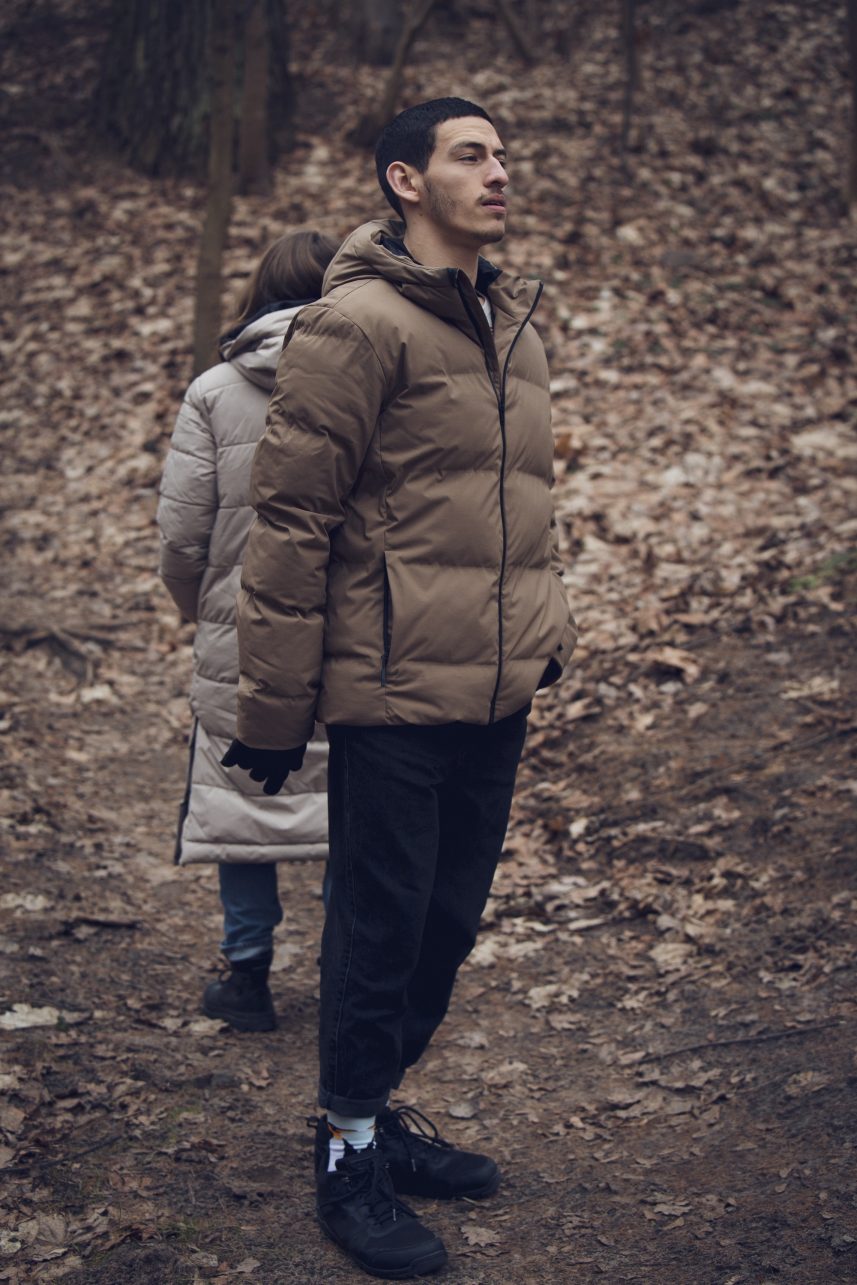
Do you have any other work-related projects together?
K: At the beginning of the relationship, we worked a lot together. Now it is a different type of collaboration.
C: We chill now. Collaborations work and do not work at the same time because we are married. There is not much respect for each other when it comes to the work environment because I want to go full-hand into that bag of rice (if using allegory again), but at the same time, Karolina pulls away the bag from me, and we end up fighting. The first collaborations were nice, we did a short experimental movie in Mexico, but in the end, we got into a discussion area. As it happened often, we realized that we could work in specific conditions only. I started to invite her to work with me but not on the whole project, but, for example, to take pictures. I say my vision, and then I fully trust her with the process.
K: In the beginning, we wanted to do everything together, work included, but we have strong opinions, and we can disagree strongly as well. But we always discuss our own projects with one another and get each other’s perspectives and opinions. A project does not go into the light without my husband’s approval (smiling).
C: A lot of visual compositions, constellations and how I see imagery is thanks to Karolina because she comes from visual arts, and I like most of the things that she presents.
So it is like you are consulting agencies with each other, which I find very valuable. What inspires you in one another?
C: From the moment we met up until now, I really adore Karolina’s strength to be selfless. She gives and helps others, and it comes from a place of honesty and love. Usually, when people give a lot, they expect something in return, but it is not with her. The downside of this is that she sometimes gives too much and can get drained or stressed.
K: I learn a lot from Carlo, especially a dedication to what you do. I do what I like, but Carlo is different – I have never met such a dedicated person. It motivates me to do more as well. And he cares a lot about everybody as well, the love and dedication for the family and surroundings.
